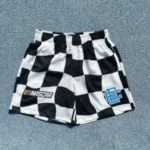Key Takeaways:
- Recognizing the transformative nature of size-inclusive fashion and its increasing availability online.
- Gleaning practical tips to ensure accurate sizing and the best possible fit while shopping online.
- Exploring the impact of design choices and quality fabrics on the plus-size fashion experience.
- Acknowledging the significant role of the fashion industry in promoting body positivity and confidence.
Table of Contents:
- What is Size Inclusivity in Fashion?
- How to Ensure the Best Fit When Shopping Online
- The Rise of Online Retail in Size-Inclusive Fashion
- The Impact of Fabric and Design in Plus-Size Fashion
- Maximizing Style with Versatile Wardrobe Essentials
- Fashion’s Responsibility Towards Body Positivity
- Accessorizing to Elevate Your Look
- Tackling the Challenges of Size-Inclusive Fashion
Fashion is not only a means of self-expression but also an embodiment of personal comfort and confidence. The beauty of the modern world lies in its diversity, which is magnificently reflected in the ever-evolving landscape of size-inclusive fashion online. With a movement championing clothing for all, regardless of size, the industry is witnessing a paradigm shift — one that celebrates every silhouette with style and grace. Shopping online has expanded the realm of possibilities, where the perfect fit is just a few clicks away, allowing individuals to find fashion that feels custom-made confidently.
What is Size Inclusivity in Fashion?
Size inclusivity in fashion represents a commitment to creating clothing accommodating diverse body types. It is the practice of providing an extensive array of sizes to ensure everyone can access fashionable and well-fitting garments. This paradigm shift within the industry is not just about extending size ranges; it’s about reimagining fashion to be universally inclusive — from design stages to marketing. Designers and brands are now recognizing the significant proportion of the population that has been underserved in the past, and by including them, the industry becomes more prosperous and more varied.
Furthermore, size inclusivity advocates for celebrating all body types, promoting body positivity and self-confidence among consumers. It challenges traditional beauty standards and encourages acceptance and appreciation of diversity in fashion. By prioritizing size inclusivity, fashion brands can foster a more inclusive and welcoming environment, empowering individuals of all shapes and sizes to express themselves through clothing confidently. You can visit this site https://www.retailmenot.com/view/bloomchic.com for more information.
How to Ensure the Best Fit When Shopping Online
Ensuring a proper fit while shopping online can initially seem daunting. Knowing one’s exact measurements is the first critical step — through a professional tailor or a self-guided session with a tape measure. Retailers’ sizing charts can then be compared to these measurements for a more accurate fit. Reading product reviews offers additional guidance, as they often divulge real-life fit and wearability experiences. Brands are increasingly aware of the need for clear sizing information, and consumers are responding with gratitude, making it a win-win for both the shopper and the retailer.
The Rise of Online Retail in Size-Inclusive Fashion
The proliferation of online retailers has opened the wardrobe doors of possibility for plus-size shoppers. Consumers who once felt limited by the choices available in brick-and-mortar stores can now explore an endless digital aisle of fashion that caters to their size and style preferences. Advancements in technology, like augmented reality fitting rooms and AI-based style assistants, offer a more personalized and precise shopping experience. This digital innovation is democratizing fashion, making style accessible to all, and shaking up the traditional retail model.
The Impact of Fabric and Design in Plus-Size Fashion
Selecting the suitable fabric is an art form, especially within plus-size fashion, where comfort and fit are paramount. Stretchable and breathable materials can contour and move with the body, striking the perfect balance between style and comfort. Design elements also play a crucial role — designers implement clever tailoring methods that enhance the plus-size silhouette rather than simply enlarging patterns intended for smaller sizes.
Maximizing Style with Versatile Wardrobe Essentials
A well-curated wardrobe can be the cornerstone of impeccable style, regardless of size. Core items such as structured blazers, versatile tunics, and adaptable dresses become the heartbeat of one’s fashion narrative. These foundational elements empower individuals to create looks that quickly and confidently span the casual to formal spectrum. When plus-size consumers have access to these essentials, their wardrobe becomes a bastion of style, functionality, and self-expression.
Fashion’s Responsibility Towards Body Positivity
The conversation surrounding body positivity has become central to the fashion dialogue, primarily influenced by consumer demand for authentic representation. Brands that weave body positivity into their DNA, not only in their sizing but also in their marketing and imagery, are meeting the moment with awareness and moral responsibility. They are influencing the cultural zeitgeist by showcasing that beauty comes in all shapes and sizes, subsequently broadening the definition of fashion inclusivity.
Accessorizing to Elevate Your Look
Beyond the apparel itself, accessories serve as the exclamation point to an outfit, underscoring personal style with finesse and flair. Smartly chosen pieces, whether a statement necklace or an elegantly buckled belt, can redefine an ensemble, projecting the wearer’s intended aesthetic. Inclusivity also plays a role here, with designers crafting accessories that consider form, function, and the beauty of diversity.
Tackling the Challenges of Size-Inclusive Fashion
While the fashion industry has made strides towards inclusivity, specific challenges remain. Consumers need to be clear about the consistency in sizing across different brands. Stock issues, such as limited quantities for in-demand sizes, present another obstacle to pursuing inclusive fashion. It models upon brands and consumers alike to engage in an open dialogue about these issues, strategizing ways to ensure that inclusive fashion is a label and a lived reality for all. Understanding the nuances of size-inclusive fashion is imperative as the industry forges ahead.


